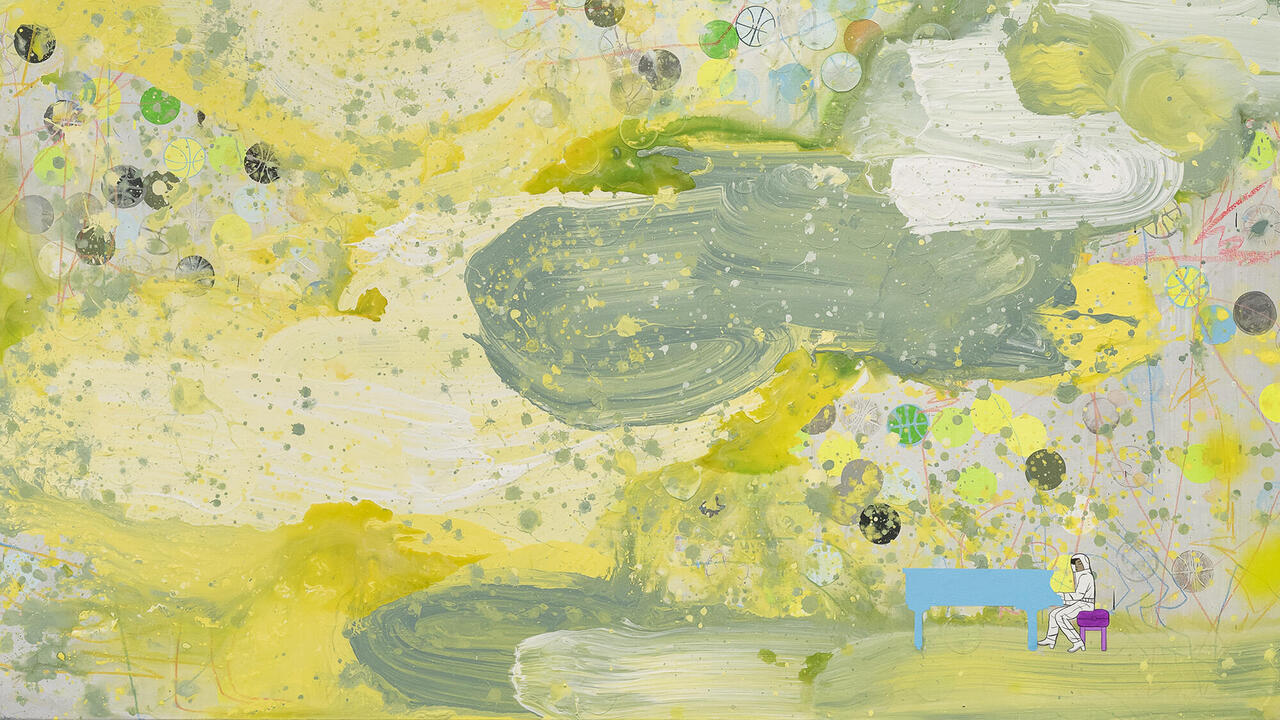Haute Couture
For a few weeks in New York this Autumn, 'Haute Couture' and Frank Stella's jazzy new murals at Leo Castelli's could be seen at the same time. This coincidence focused my attention on the seam of difference between the way things look and the way things mean; suddenly, I'm thinking about Beauty and Style and how they are understood in the worlds of fashion and art. I'm thinking about Frank Stella, the reigning couturier of the art world, and all his frivolity, exclusivity, insouciance, delirium and expense. I'm thinking about The House of Stella. One thing is instantly clear: while their clients persistently adore them for being 'artists', fashion's couturiers have slumped into a hallucinatory fog of denial; that in fact, they are not artists at all (at least not in the way Stella is an artist).
Couturiers are plagued by a fearsome anxiety over their status as artists, and it seems to surface in all sorts of uncomely ways. Sometimes they awkwardly vogue as artists, praying no one will notice they're all 'phoney'. Another obvious example is that couturiers always insist on calling their studios ateliers especially when speaking in English. Or sometimes, they have one of their employees just blurt it out, like when Cécile Ouvrard, head of the Christian Lacroix atelier, claimed the mantle for her boss: 'Lacroix's dresses are like paintings' she said, 'they're incredible, like museum pieces'. Ouvrard must rest easier now that Lacroix's raspberry silk taffeta gown has become a museum piece in the 'Haute Couture' exhibition at the Metropolitan Museum of Art. While still not a painting, still not part of culture's first order, his evening gown is no longer merely 'like' a museum piece, it is one. But the basement positioning of the Costume Institute adds to the anxiety constantly endured by couturiers. The museum, after all, keeps its Stellas upstairs. Being 'in' with the 'real' artists is only a nagging reminder of how 'out' you actually are.
When the couturiers aren't fretting over fashion's status, others in the industry fret for them. No one missed Richard Martin's defensiveness in his press release. Here's some advice for couturiers: take a look at what they have been up to at the House of Stella. He suffers, nearly fatally, from being too much an artist it is an equal, if opposite, affliction to that from which couturiers universally suffer. Ditheringly grandiose and wilfully pompous are descriptions far too frail to do justice to Severambia. At 10 x 40 x 29 feet it is Stella's largest 'free standing mural'. For his newest 'collection of murals', recycling the previously recycled imagery he threw at us when making the world's 'biggest print' at Tyler Graphics, the artist has ripped a page from Christian Lacroix's book, who once said 'for me, too much is never enough'. Well Christian, there is an exception to every rule, including yours meet Frank.
The business of Haute Couture is the production of beauty. Admittedly, the production of beauty is not a 'vindication of privilege and wealth' as Martin wishes to argue, but it is the production of beauty for the privileged and wealthy in such a way that it makes them individually more agreeable, if only to themselves. The appeal of Haute Couture is beauty, style and elitism, and yet the fashion industry longs for it to mean something more something serious. Why? Endlessly self-conscious about what Haute Couture does best, couturiers are, in turn, self-deprecating about the way beauty is understood within our culture. In their aspiration to be artists, couturiers actually aim for an appreciation of beauty that is more aligned with Dave Hickey's notion of beauty as an overwhelming and powerful tool. Haute Couture need not aspire to something it already possesses, and possesses in measures that reveal the political clout of fine art and museum culture as hovering somewhere near zero. Consider how the use of fake fur has foregrounded the agenda of the animal rights and anti-fur movements. Couturiers had a real, serious and measurable impact. Couturiers can make 'artists', who think they have been truthful, feel awfully jealous.
The weight of the hand of Haute Couture can be felt decisively on history's larger swells. Contemplate Christian Dior's 'Bar' suit from the spring of 1947. This beige silk jacket with black wool skirt is beautiful and strong self-confident with a courtly sense of the sublime. Dior's post-war mission was to reconvene Haute Couture in Paris with suits and dresses as exquisite as this one. Such an ambition required not only a grand artistic resuscitation, but the ability to summon the skills of the artisan in the same gesture.
His 'New Look' which appeared in 1947 was not only an artistic triumph, but an economic accomplishment. Dior's vision was realistic, broad and deep as he rebuilt an artistic, economic and social infrastructure when Paris needed it the most. Were Matisse, Picasso or Pollock this enterprising, artistically, socially or economically?
Couturiers, hear this from the other side: stop the annoying fretting that fashion slips between the way things look and what they mean. 'Haute Couture' is not only a beautiful exhibition but historically profound in ways at least as engaging as anything to be seen on the museum's upper floors. In the sense that our culture applies the word, couturiers are not 'artists'. And good for them. And good for artists too, for it gives us a fair standard to aspire to.
















